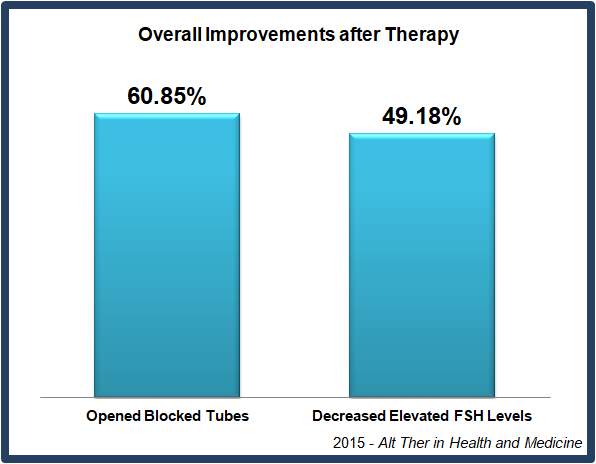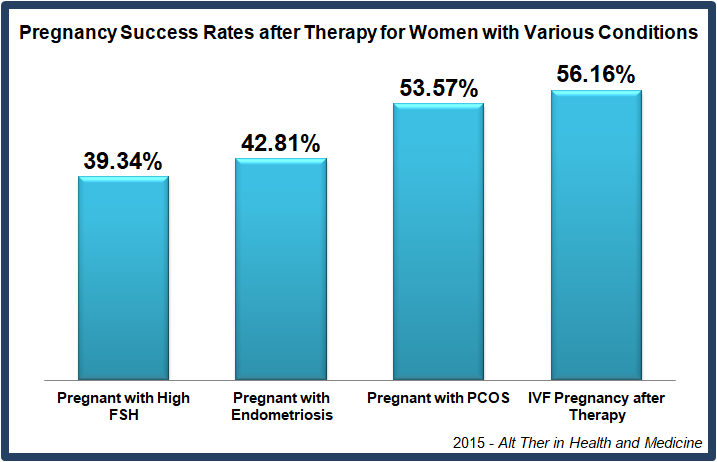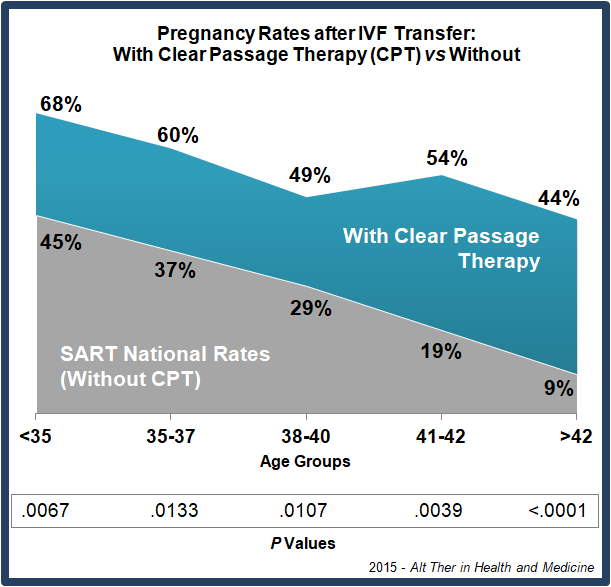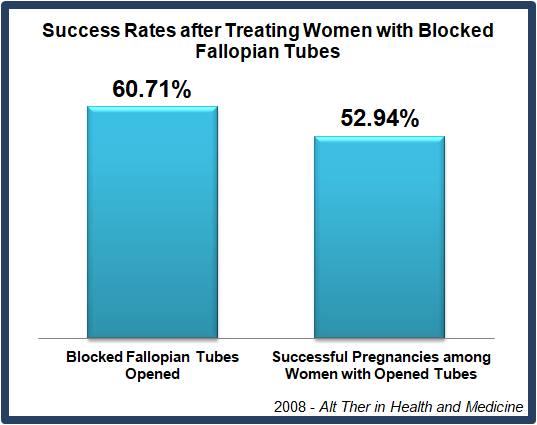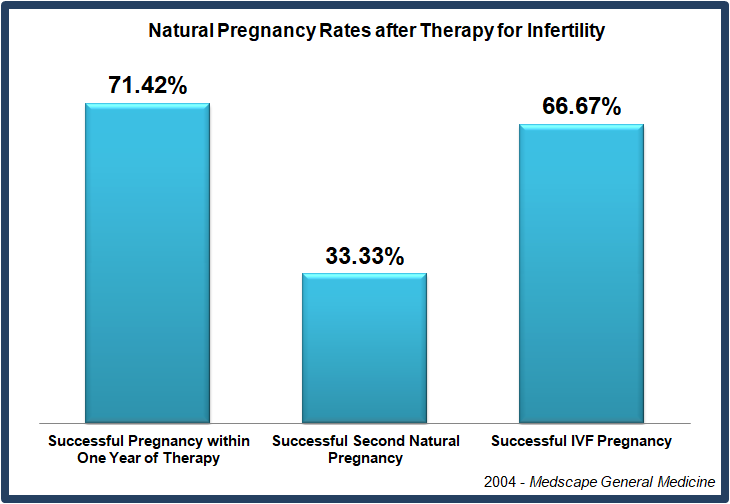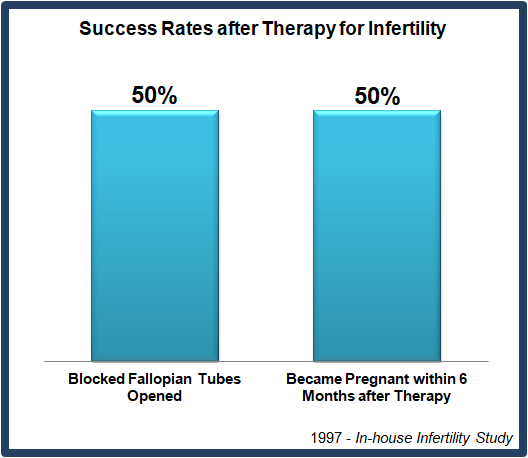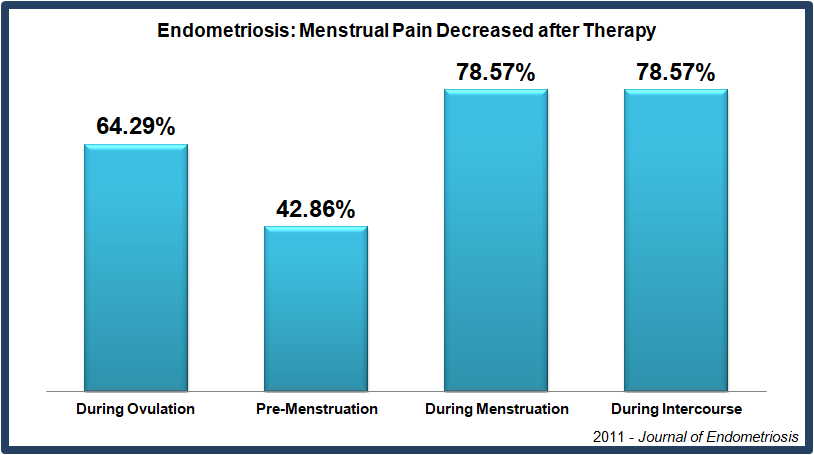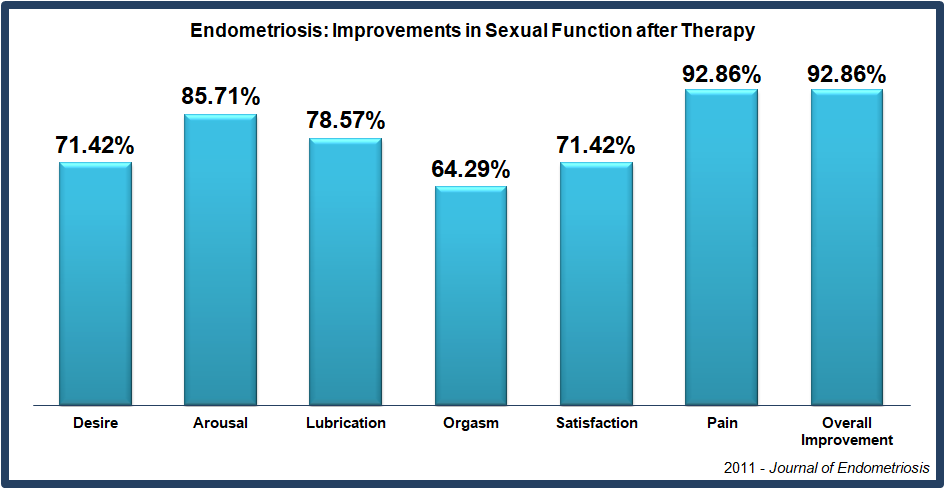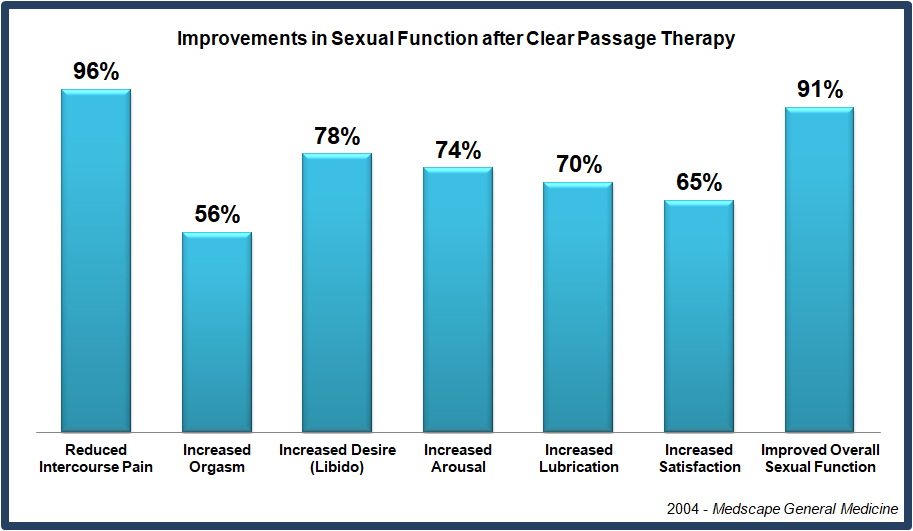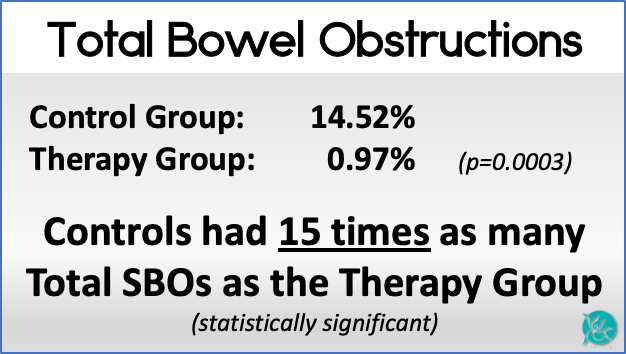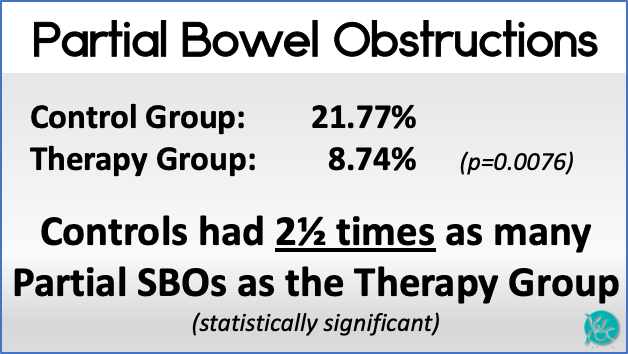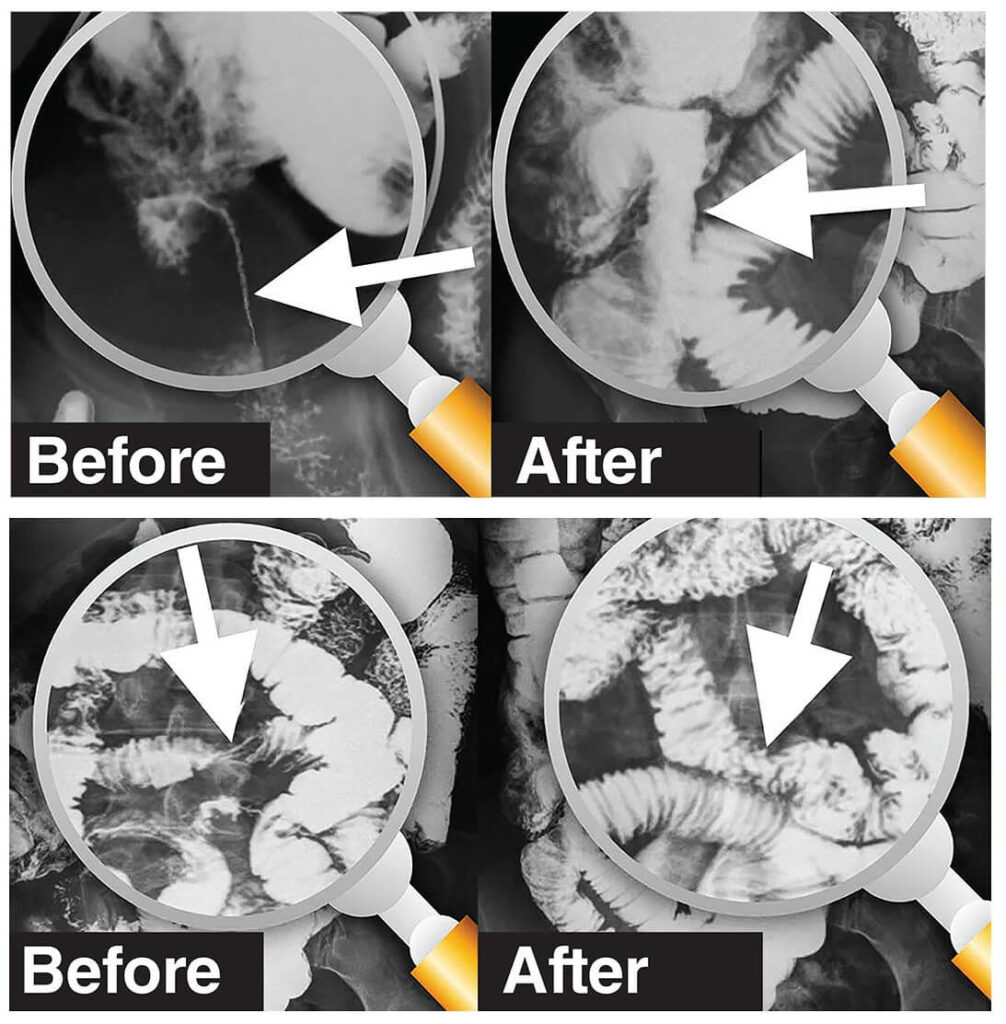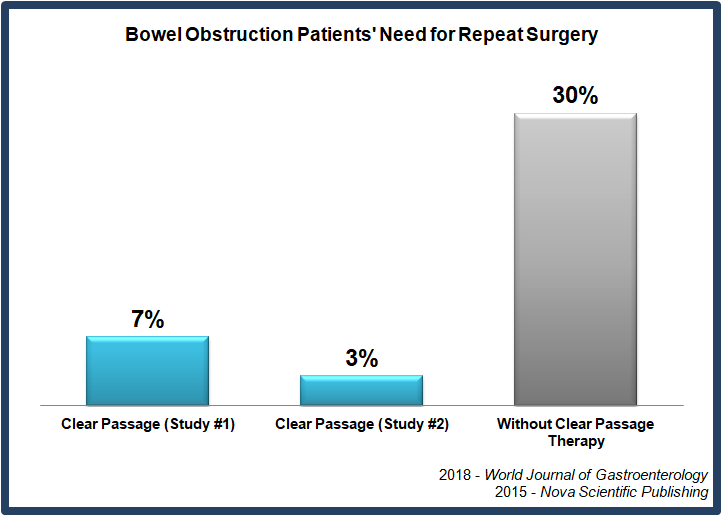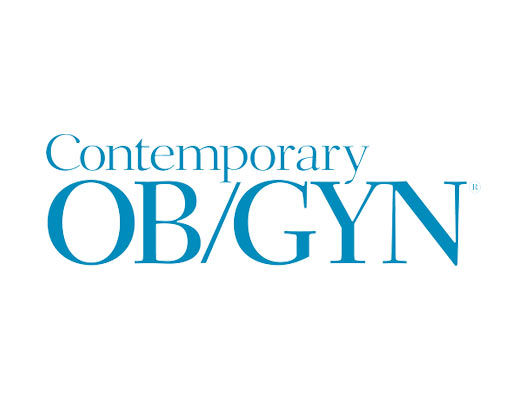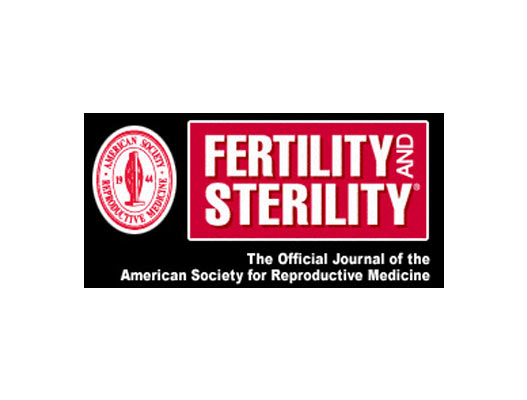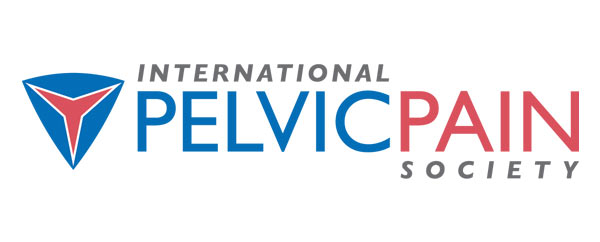Studies from major medical journals and shown below are also available from the US National Institutes of Health (NIH.) These studies examine results of the Clear Passage Approach® as a non-surgical treatment for a variety of conditions caused or exacerbated by adhesions. Below are overviews and links to each of these studies.
For an overview of our published success rates, please visit our Success Rates page.

Female Infertility
Natural & Pre-IVF
Alternative Therapies in Health and Medicine – 2015
This landmark study examined a large population of infertile women treated at all Clear Passage (CP) clinics, between 2002 and 2011, and compared success rates of CP to traditional medical treatments (surgeries and pharmaceuticals). Success rates with CP therapy rivaled or exceeded medical success rates in the most common causes of female infertility: PCOS (often accompanied with failure to ovulate), blocked fallopian tubes, endometriosis and high FSH hormone levels. The therapy also increased IVF pregnancy rates by 50%, when performed before transfer.
Alternative Therapies in Health and Medicine – 2008
Treating Fallopian Tube Occlusion With a Manual Pelvic Physical Therapy (highlighted in Contemporary Ob/Gyn – Noninvasive Pelvic Physical Therapy Opens Occluded Fallopian Tubes)
This study reported the success rate of clearance of fallopian tubes via the Wurn Technique. A 61% success rate for the clearance of blocked fallopian tubes and a 50% clearance rate for hydrosalpinx were reported in this study. Success was independent of blockage location and age of the patient.
American Society of Reproductive Medicine Presentation – 2006
“Treating Hydrosalpinx with a Manual Pelvic Physical Therapy”, October 2006 62nd Annual American Society for Reproductive Medicine (ASRM), New Orleans, LA, poster presentation. Abstract published in: Fertility and Sterility, 86(3): S307.
Medscape General Medicine – 2004
This study reported the success rate of patients diagnosed as infertile due to adhesion disease. There was a 71% pregnancy rate in the natural conception study. There was a 67% pregnancy rate in this pre-IVF study with 22 pregnancies/33 transfers that occurred within 15 months after treatment. This represents a pregnancy rate 3 times greater than that of untreated women, per national statistics.
In House Study – 1997
A two-part study, designed and authored by a former NIH researcher:
Study #1: a retrospective study of four female infertility cases (2 with totally blocked fallopian tubes, 1 adhesion related, 1 unexplained);
Study #2: a prospective study of four infertile women with total tubal blockage, designed to test and replicate results of the prospective study.
Results:
Study #1: Natural intrauterine pregnancy and live births after therapy in 100% (4/4) of the women. These included one woman with twins, and another with successive pregnancies/births.
Study #2: The therapy opened the tubes in 50% (2/4) of the women. No long-term follow-up was done to assess pregnancy rates.
Combined: Fallopian tubes opened in 67% (4/6) of women initially diagnosed with total blockage in both studies. Positive outcomes in 75% (6/8) of women after therapy (pregnancy/birth, cleared tubes).
Endometriosis
Journal of Endometriosis – 2014
This follow-up report assesses the long-term impact on menstrual and intercourse pain in patients treated with the Wurn Technique. Long-term follow up at 4 and 12 months post-treatment was performed in a subset of these patients. The results showed a significant reduction in menstrual pain 4 and 12 months post treatment, as well as significant reduction in intercourse pain at 4 months and suggestive at 12 months post treatment (with 50% of patients reporting complete resolution of pain).
Journal of Endometriosis – 2011
This study assessed pain in two different groups of women with endometriosis pain after treatment with the Wurn Technique. Results: 61% of women in this study reported an overall reduction in menstrual pain; 79% to 93% reporting a decrease in intercourse pain. Overall, 93% reported improvements in overall sexual function.
American Society of Reproductive Medicine Presentation – 2006
“Treating Endometriosis Pain with a Manual Pelvic Physical Therapy”, October 2006 62nd Annual American Society for Reproductive Medicine (ASRM), New Orleans, LA, poster presentation. Abstract published in: Fertility and Sterility, 86(3): S262.
American Society of Reproductive Medicine Presentation – 2006
“Improving Sexual Function in Patients with Endometriosis via a Pelvic Physical Therapy,” October 2006 62nd Annual American Society for Reproductive Medicine (ASRM), New Orleans, LA, oral presentation. Abstract published in: Fertility and Sterility, 86(3): S29-S30.
Pelvic Problems
Journal of Endometriosis – 2014
This follow-up report assesses the long-term impact on menstrual and intercourse pain in patients treated with the Wurn Technique. Long-term follow up at 4 and 12 months post-treatment was performed in a subset of these patients. The results showed a significant reduction in menstrual pain 4 and 12 months post treatment, as well as significant reduction in intercourse pain at 4 months and suggestive at 12 months post treatment (with 50% of patients reporting complete resolution of pain).
Journal of Endometriosis – 2011
This study assessed pain in two different groups of women with endometriosis pain after treatment with the Wurn Technique. Results: 61% of women in this study reported an overall reduction in menstrual pain; 79% to 93% reporting a decrease in intercourse pain. Overall, 93% reported improvements in overall sexual function.
Medscape General Medicine – 2004
This study assessed the improvements of intercourse pain and overall sexual function in women with a history of chronic pelvic pain. In this population, 93% of patients reported a decrease in intercourse pain after Wurn Technique treatment and 91% reported an increase in overall sexual function.
Bowel Obstruction
World Journal of Gastroenterology – 2018
This landmark controlled study compared the rate of repeat small bowel obstructions (SBO) and quality of life among patients who received CP therapy vs. those who did not receive the therapy. During a three-year period, 103 patients were treated with the Clear Passage Approach® (CP). 90-day outcomes were compared to 136 patients who received no therapy – the usual standard of care. Click here for some of the most pertinent results.
After 90 days, 15% of patients who did not receive the therapy had repeat total SBO; less than 1% of the CP treated patients had SBO. In addition, the non-treated group underwent roughly three times more repeat surgeries than those who received CP.
Domains of diet, pain, gastrointestinal symptoms, quality of life and pain severity improved significantly (p<0.0001) for all CP treated patients. Statistical analysis showed a significant increase after CP therapy for all six measures of trunk mobility: flexion, extension, L&R sidebending, L&R rotation. (multiplicity adjusted P-values<0.05).
International Journal of Case Reports – 2018
Co-authored by surgeons from Stanford and Washington University Medical Schools, this study examines the Clear Passage Approach for its ability to reverse bowel obstructions and strictures in a patient with Crohns Disease. The study includes films of the bowel ‘before and after’ therapy. Click here to view the ‘ before and after’ films from this study.
Scheduled for surgical resection and with #8 (of 10) pain, the patient chose to try Clear Passage first. Pre- and post-surgical radiographs showed total resolution of readily observable obstructions and strictures, including a roughly 3” long stricture narrowed to the size of a coffee straw.
Films taken before and after the therapy show the obstructions before therapy, and a normal bowel (no strictures, no obstructions) after therapy. Because the patient reported significant pain decrease and the bowel was judged ‘normal,’ the planned surgery was canceled as unnecessary.
BioMed Research International – 2016
This study reported on safety and effectiveness of the therapy on a group of patients with recurring small bowel obstruction. The therapy was found safe. Effectiveness was shown via improvements in overall quality of life in patients with a history of adhesive small bowel obstruction. Improvements in range of motion, pain, overall quality of life and gastrointestinal symptoms were all significant. Improvements were also noted in patients with impacted diets and requirement for medication.
Digestive Disease Week Presentation – 2015
Treating Small Bowel Obstruction with a Manual Physical Therapy: A Controlled Prospective Efficacy Study
May 2015, Digestive Disease Week (American Gastroenterological Association), Washington, DC, poster presentation.
Download poster presentation in readable view (PDF)
Abstract published in Gastroenterology, 148(4): S644. doi: 10.1016/S0016-5085(15)32174-0
Intussusception and Bowel Obstruction: Symptoms, Diagnosis and Treatment Options, NOVA Scientific Publishing – 2015
This book chapter summarizes the published data on the treatment of adhesions causing recurrent small bowel obstructions with the Clear Passage Approach (CPA). This chapter assesses the longevity of results of therapy — the first published data on the long-term outcomes for SBO patients after CPA treatment. The data showed a significant decrease in the rate of repeat surgeries (3%) 19 months after therapy, compared to the expected rate of surgery (30%) per published data. It also reports on the rates of side effects observed in 31 patients monitored during the course of treatment. Side effects noted were transient, with aching being the most commonly reported side effect during the course of treatment, followed by hip or back pain and abdominal tenderness.
Healthcare – 2014
This is a validation of a new tool for assessing the quality of life for patients with a history of adhesive small bowel obstruction in a patient-reported format. The questionnaire allows for monitoring of changes in diet, pain, gastrointestinal symptoms, requirements for medication and overall quality of life in this patient population.
Pediatric Reports – 2014
This single case report describes the improvements in a pediatric patient that was experiencing multiple complications related to adhesion disease after a series of 19 surgeries in one year. After a series of treatments, the recurrent adhesive small bowel obstruction symptoms had resolved and he was able to avoid another surgery for an ascending testicle. This study includes ultrasound imaging of his pelvis showing a decrease in the adhesions post treatment.
Journal of Clinical Medicine – 2013
This multiple case report outlines the outcomes of two adult patients with extensive surgical histories, experiencing recurrent adhesive small bowel obstructions (ASBO). Both reported a decrease in pain, improvement in quality of life and no additional surgery for ASBO two years following treatment. One patient underwent a follow up small bowel X-ray series demonstrating clearance of the adhesions and stricture post CPA treatment.
Journal of Palliative Medicine – 2013
This single patient case report describes the improvement in quality of life in a terminal patient experiencing recurrent small bowel obstruction, depending upon IVs for nutrition and a poor quality of life. After treatment she was able to eat and travel, dramatically improving her quality of life.
Problems Due to Childhood Surgery or Trauma
Pediatric Reports – 2014
This single case report describes the improvements in a pediatric patient that was experiencing multiple complications related to adhesion disease after a series of 19 surgeries in one year. After a series of treatments, the recurrent adhesive small bowel obstruction symptoms had resolved and he was able to avoid another surgery for an ascending testicle. This study includes ultrasound imaging of his pelvis showing a decrease in the adhesions post treatment.
Related Content:



